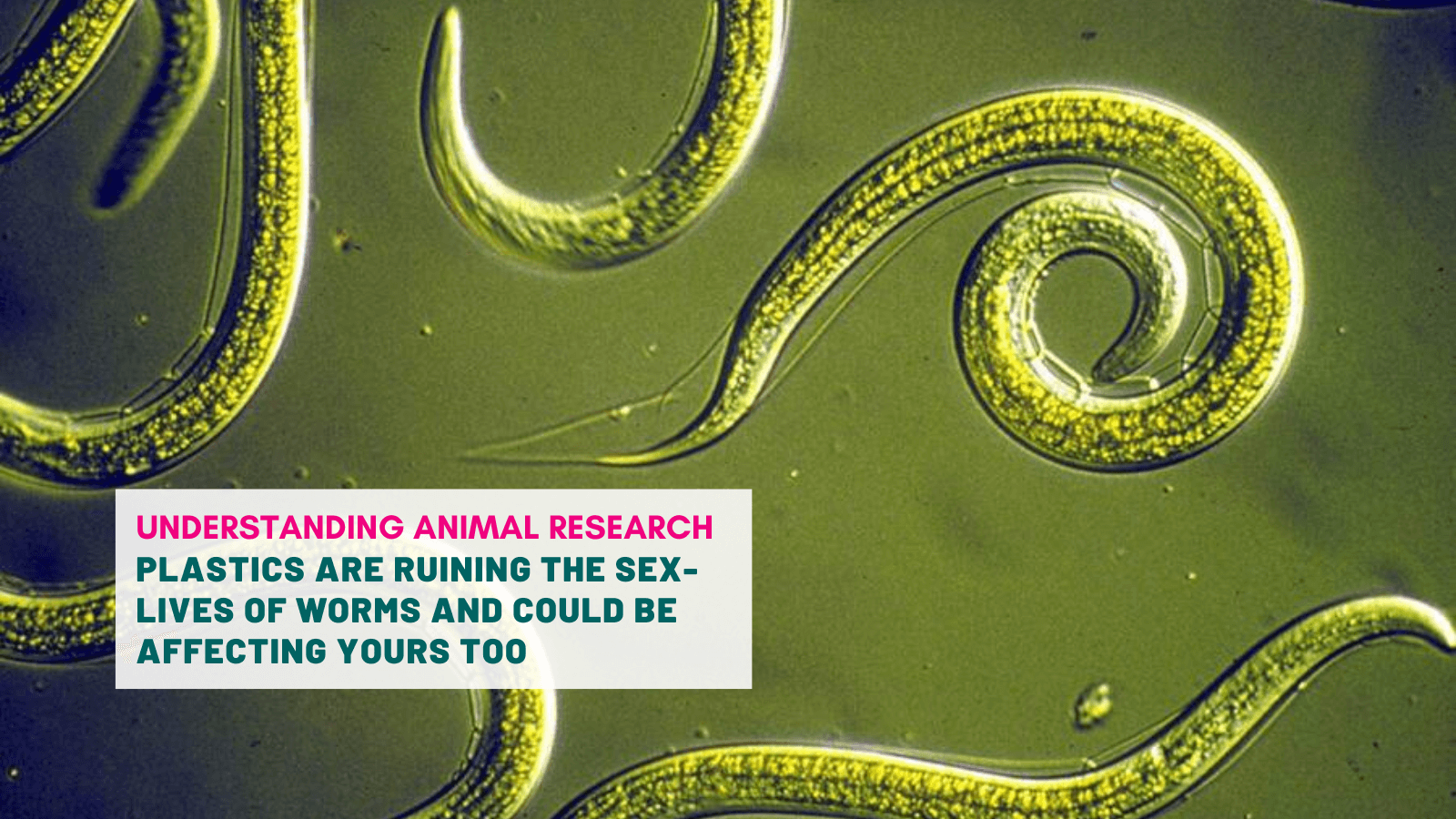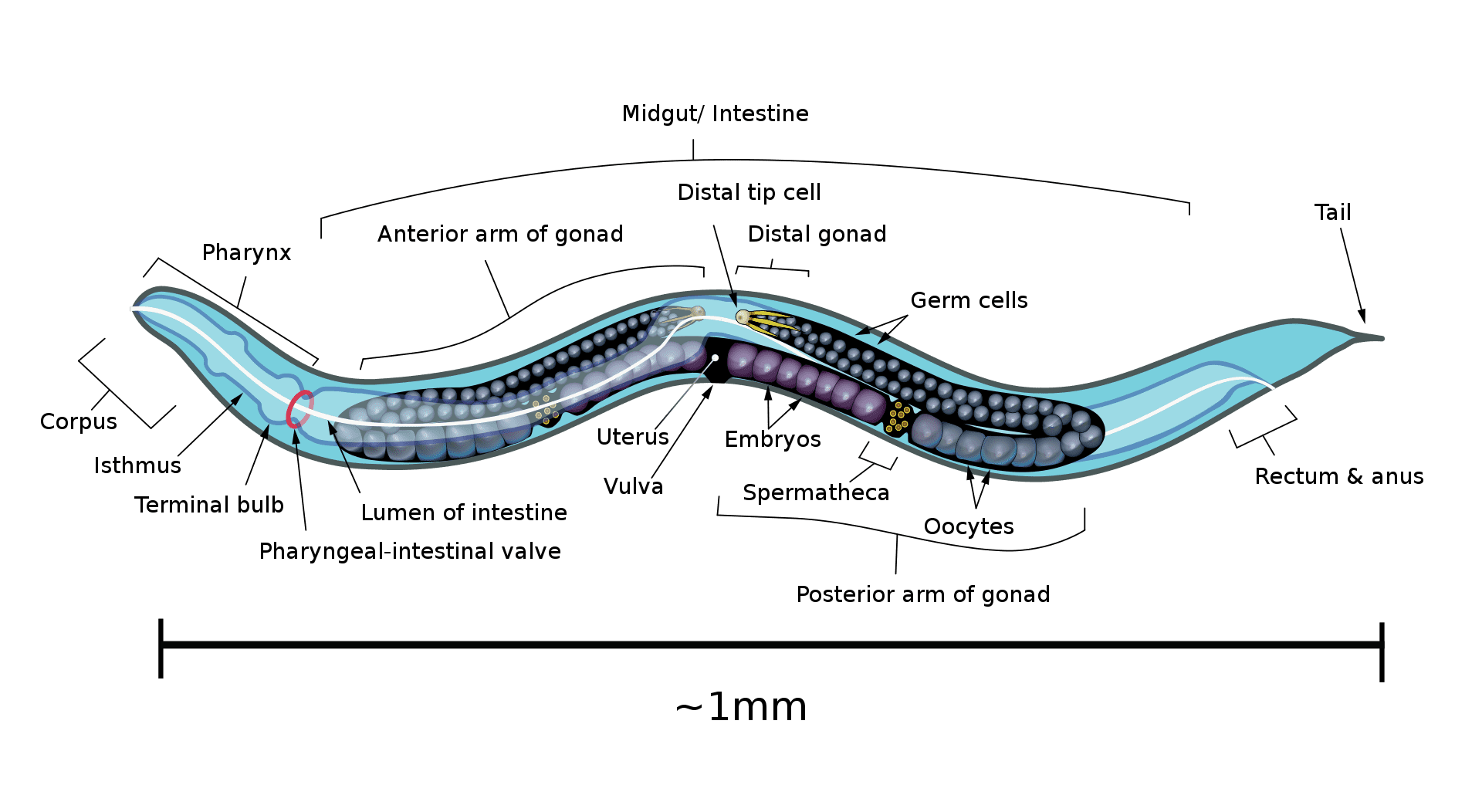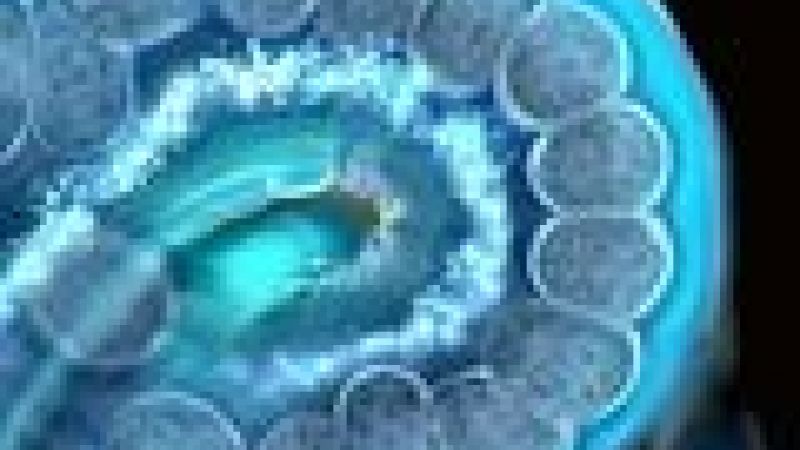
The plastic age is affecting nematode worms and probably humans
About four million tons of Di (2-ethylhexyl) phthalate (DEHP) is produced each year to manufacture plastics. Unfortunately, the chemical, that can be found in toys, clothing, food packaging, flooring and personal care products can also cause fertility problems. A new study shows that this phthalate can cause DNA breaks and interferes with the DNA repair system, during egg production in the nematode worm C. elegans. O
For several years now, researchers have shown that components of plastic, such as Bisphenol A (BPA), can find their way into our food and beverages, and disrupt cellular function, influence growth, foetal development, energy levels, and fertility, and cause metabolic and heart diseases - even at small concentrations. Numerous studies have revealed that exposure to the most common plasticiser, diethylhexyl phthalate (DEHP), causes a variety of fertility problems in both men and women, but exactly how the chemical exerts its harmful effects remained unknown until recently.
A new study published 9th January 2020 in PLOS Genetics by Mónica Colaiácovo of Harvard Medical School and colleagues reported that exposure of DEHP at concentrations currently found in the human environment leads to fertility problems in the nematode C. elegans. The phthalate causes an excess number of double-strand breaks in the DNA during the cell division process that occurs during egg production, and then interferes with the repair systems that normally fixes the breaks.
This happens in part through the alteration of the chromatin by DEHP,
“our analysis pinpoints changes in the chromatin landscape. Blankening of the chromosomes, and changes in the compaction of the chromatin make the DNA more fragile and susceptible to breaks. It is a double hit, DEHP is causing more breaks and weakening the repair system,” explains Dr Mònica Colaiacovo.
This plasticiser, at equivalent circulating levels found in human populations, is therefore responsible for altering egg and sperm production in C. elegans. But could these results be applicable to other animals? Although worms and humans look nothing alike, their reproductive systems have more in common than meets the eye.
Anywhere from 60 to 80% of genes are conserved between the worm and humans,
“and in the context of meiosis and egg and sperm production, that conservation is towards the higher end,” adds Mònica. Meiosis is very similar from one species to another and “I believe the conservation is high enough that our results could be very informative about what happens in humans”.
The analysis of other chemical component of plastics have shown equivalent results in worms, mice, rhesus monkey and humans.
“Our previous work on BPA showed that the expression of a defined set of genes was altered both in humans and worms. Two years after publication, other research groups found similar effects in mice. So we expect that DEHP will also have the same impact in all systems.”
The researchers also had practical reasons for studying the worm. C. elegans is a very cost-effective model that allows for a very broad genetic analysis.
“One worm lays between 200 and 300 eggs and the germ line forms about 50% of all the nuclei in the adult worm, so there is ample biomass for analysis. The life cycle is very rapid, the worm goes from an egg to an adult in just 3 days and the next 3 days will be dedicated to laying all of its eggs. In the span of a week, you go from one generation to the next. Working with the worm allows us to study many individuals, very quickly.”
But working in worms isn’t always straightforward or automatic, especially regarding toxicity tests. “Chemicals are not necessarily metabolised in worms the same way as they are in humans. Worms don’t have a liver, so the processing and breakdown of most chemicals happens in the gut,” explained Mònica. Her team made sure to control for DEHB metabolism in the worm. Both DEHB and its metabolites were identified in C.elegans, at very similar levels as in the human population, indicating that the worm can process the chemical like humans.
Sometimes, it is also impossible to look at the effects of chemical in worms because the developmental timing of exposure just doesn’t fit. While, many longevity genes and life events translate quite nicely from worms to mammals, “it is possible that something that affects worms early on in development, doesn’t show the same impact in a similar developmental window in humans,” explains the researcher. Furthermore, it is important to take into account the physiological differences between both systems when it comes to meiosis. Human meiosis happens in the developing foetus in the pregnant mother during a very specific time of gestation, and the resulting eggs rest in wait for puberty and ovulation whereas meiosis in the worm happens during development, it is happening in the worm all the time.
“Despite all those differences, it is really interesting that a lot of processes and events still translate from invertebrates to mammals.”
© K. D. Schroeder
C. elegans are helping researchers understand the impact of plastic pollution. The findings provide new insights into how environmentally relevant levels of DEHP impair the process of making eggs and sperm in animals and could affect the future of human evolution. It is imperative to reduce the use of DEHP as a common plasticizer or to find alternative and safer substitutes that will minimize the risk of human exposure or face the prospect of decreasing human fertility, a trend already widely apparent.
You might also be interested in this video about using mice to study the chemicals disrupting human reproduction: https://www.understandinganimalresearch.org.uk/resources/video-library/growing-human-testis-tissue-in-mice-to-study-human-reproductive-disorders/
Last edited: 30 August 2023 12:21




